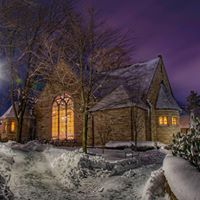A Few More Winter Tips…
Preventing Slips & Falls
- Wear boots – proper footwear is well insulated, waterproof, with wide, low heels and a thick, non-slip tread on the sole.
- Take small steps to keep your center of balance under you.
- Walk slowly and never run on ice/wet surfaces.
- Keep both hands free for balance (as opposed to being kept in your pockets).
- Watch where you’re going.
- Test potentially slick areas by tapping your foot on them.
- Step, don’t jump, from vehicles and equipment.
- Walk in walkways as much as possible – taking shortcuts over snow piles and areas where snow and ice removal is not feasible can be hazardous.
- Plan ahead – give yourself sufficient time and plan your route.
- Wipe your feet, use floor mats when entering a building – in addition to keeping floors clean, mats are also used to remove moisture from the soles of your shoes.
- Use handrails where available.
Keeping Warm While Being Outside Clearing Snow and Ice
Keeping Your Home Safe and Warm
- Install a smoke alarm near bedrooms and on each floor of your home. Test it weekly and change the battery at least once a year (to be safer change the battery twice yearly).
- Install carbon monoxide (CO) detectors near bedrooms and on each floor of your home. Know the symptoms of CO poisoning: headache, fatigue, dizziness, and shortness of breath. If you experience any of these symptoms get to fresh air right away and contact your local emergency services for their response.
- Make sure heating equipment is installed properly by having a trained specialist inspect and “tune up” your heating system each year.
- Keep portable space heaters at least 3 feet away from anything that can burn, including bedding, furniture, and clothing. Never drape clothing over a space heater to dry.
- Keep children and pets away from space heaters. Never leave children in a room alone when a space heater is in use.
- If you use a kerosene heater, use only the fuel recommended by the manufacturer. Before you refuel the heater turn it off and let it cool down. Remember to refuel it outside only.
- When using a kerosene heater keep the room door open or slightly open a window; this will reduce the chance of carbon monoxide building up in the room.
- Have your fireplace or wood/coal burning stove chimney, flue, and connections inspected and the chimney cleaned before each “burning season.” Burn only untreated wood and avoid burning paper or pine branches which can float out of the chimney and ignite your or a neighbor’s roof or nearby trees.
- Never use your range or oven to heat your home, even for a short period of time.
Surviving a Winter Storm


